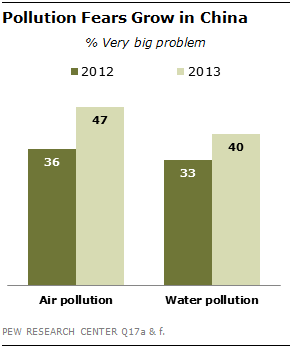 The northern Chinese city of Harbin was largely shut down Monday by a thick blanket of smog, underscoring China’s recurring battles with air pollution as it tries to keep its massive population warm, connected and employed.
The northern Chinese city of Harbin was largely shut down Monday by a thick blanket of smog, underscoring China’s recurring battles with air pollution as it tries to keep its massive population warm, connected and employed.
Concern about air pollution has grown sharply in recent years, according to a Pew Research Center survey from this past spring. In that survey, 47% of Chinese said air pollution was a “very big” problem facing the country, up from 31% in 2008 and 36% last year. Air pollution ranked fourth out of 15 issues in terms of public concern, behind rising prices (which 59% of people cited as a very big problem), corrupt officials (53%) and the gap between rich and poor (52%).
Harbin’s latest bout of smog began last week, but was exacerbated when officials turned on the coal-powered municipal heating system for the winter. The city government reported an air quality index of 500, the highest possible reading; anything above 300 is considered hazardous. Some neighborhoods reported concentrations of PM2.5 (fine particulate matter that is 2.5 microns or less in diameter, which are considered especially harmful) as high as 1,000 micrograms per cubic meter. (By comparison, the U.S. Environmental Protection Agency’s air-quality standards say PM2.5 should not exceed 35 micrograms per cubic meter in any 24-hour period.)
Harbin isn’t alone in struggling with air pollution. Monday’s PM2.5 level was 115 in Beijing, 85 in Guangzhou and 47 in Shanghai, according to China Air Daily (a project of the New York-based Asia Society’s Center on U.S.-China Relations). In contrast, the PM2.5 reading was 9.8 in New York and 10.8 in Phoenix.



